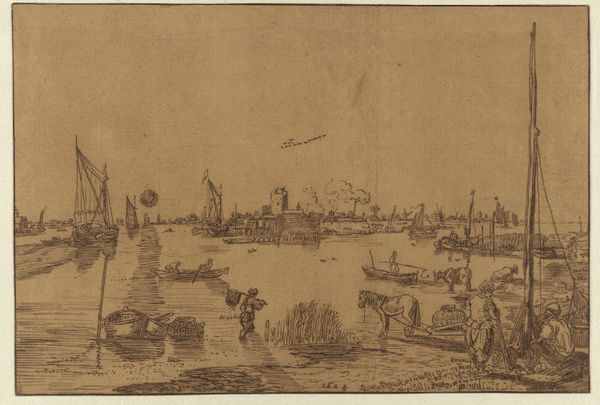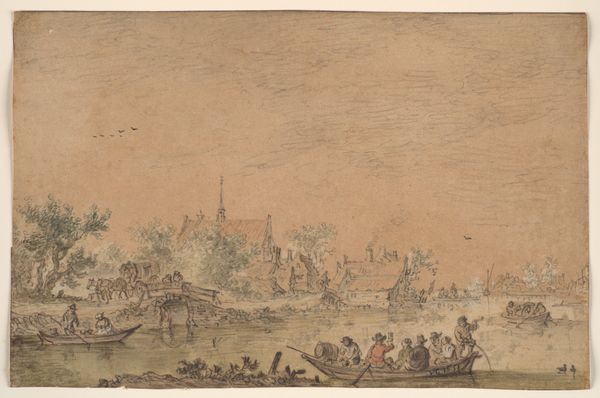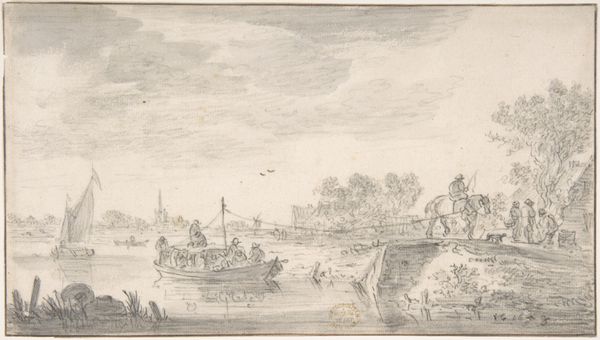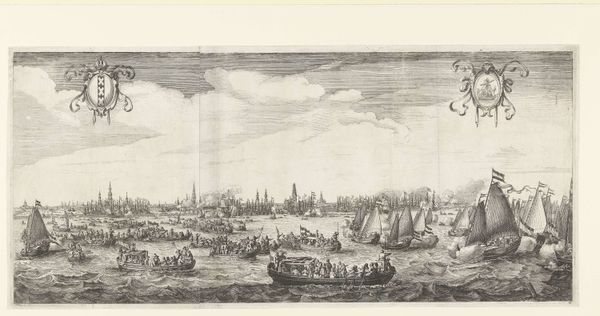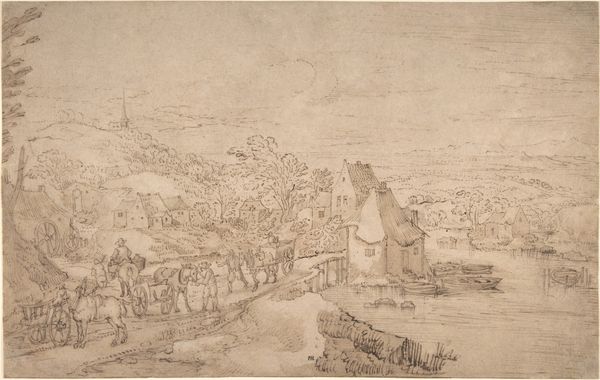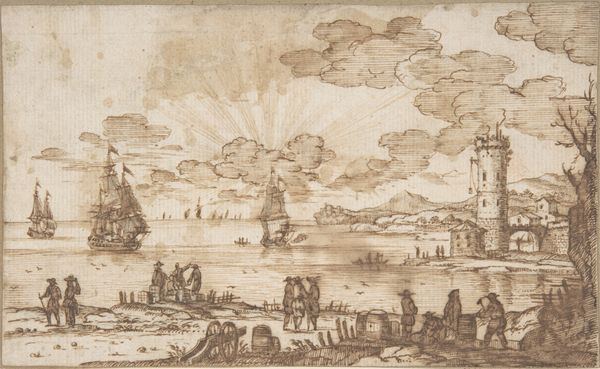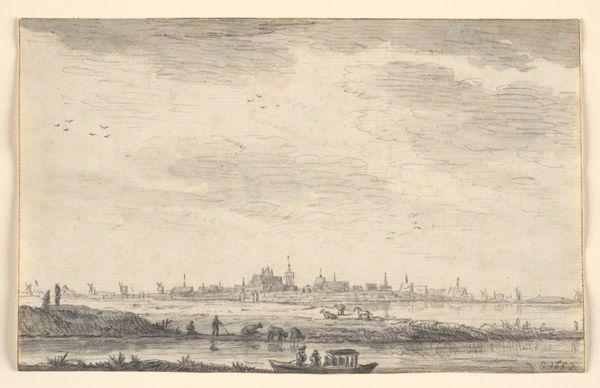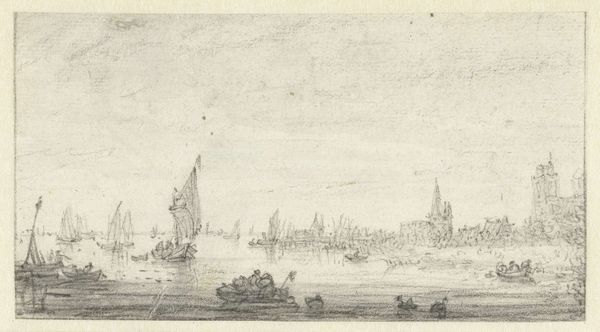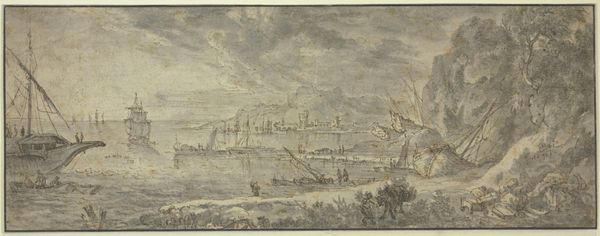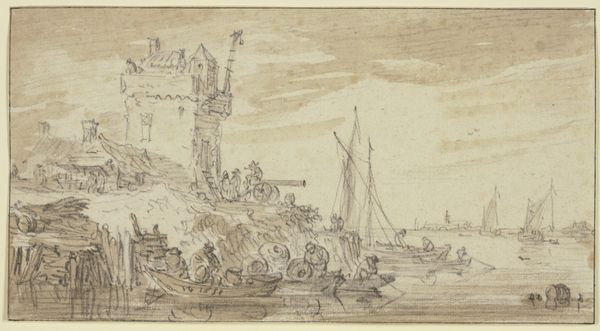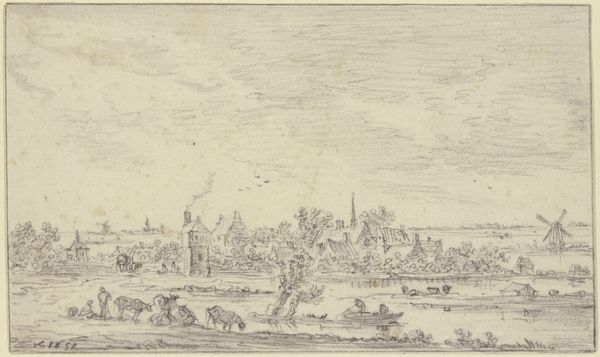
drawing, ink
#
drawing
#
baroque
#
landscape
#
ink
#
14_17th-century
#
cityscape
Copyright: Public Domain
Curator: This drawing is called *Bucintoro outside Venice*. While undated, it’s by Agostino Tassi, rendered in ink, and it beautifully captures a bustling cityscape. Editor: The light—it practically explodes out of those cumulus clouds! It directs the eye across the water, past the procession, and towards the hazy horizon. Curator: Precisely. Think of Venice, even rendered simply as it is here. Water, the heart of its economy and defense. Boats signify freedom, movement, and prosperity. Do these symbols ring true even today? Editor: Absolutely. Though the details are sparse, the artist masterfully evokes depth. See how he positions the architectural elements and the vessels to create distinct spatial zones? Curator: Indeed. But consider what the Bucintoro, the state barge of Venice, represented. It embodied the might and grandeur of the Venetian Republic. Each voyage reaffirmed civic identity and dominance, with roots going back centuries. Editor: I notice the somewhat repetitive rendering of the figures in the foreground. Almost like…symbols in themselves. Is it possible that formal qualities were superseded by an intention to communicate ideological power? Curator: I'd suggest that's the essence of baroque aesthetics. Heightened drama served state interests. Look how even the sky seems to bear witness! It reinforces the narrative. Editor: I suppose even in such an unassuming medium like ink on paper, the intent for spectacle bleeds through. This seemingly modest drawing holds a far more grand message. Curator: It serves as a lens onto a worldview, the ambitions of an empire on water. These images tell a silent story, one that ripples through time, resonating within Venice still. Editor: Yes. And that story is beautifully articulated through Tassi's orchestration of form. Every compositional decision reinforces that central theme of power, even centuries later.
Comments
No comments
Be the first to comment and join the conversation on the ultimate creative platform.
